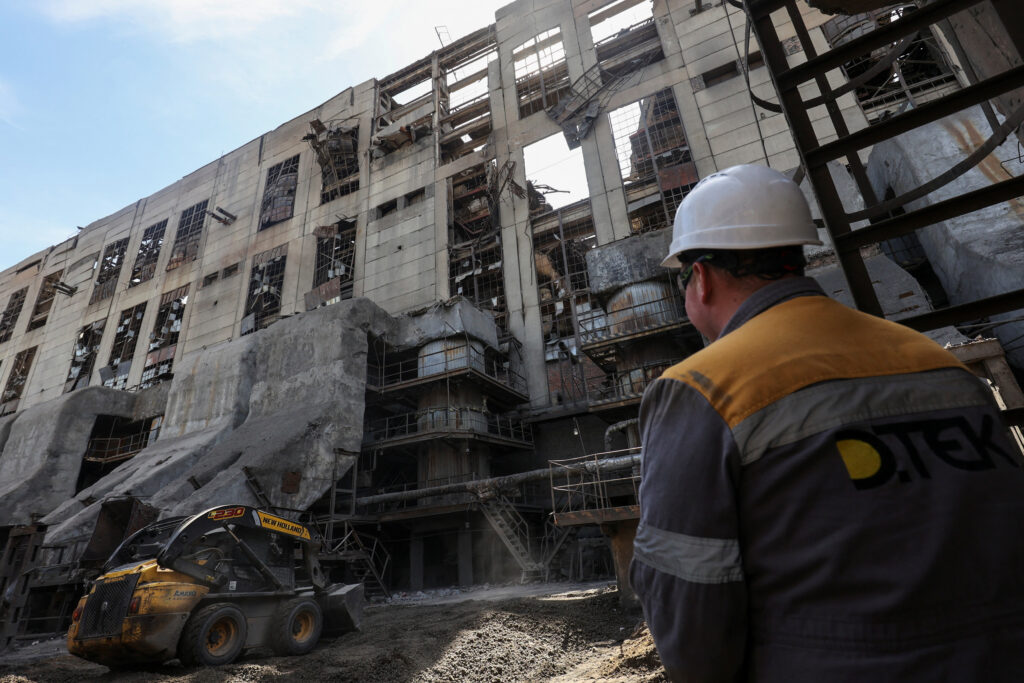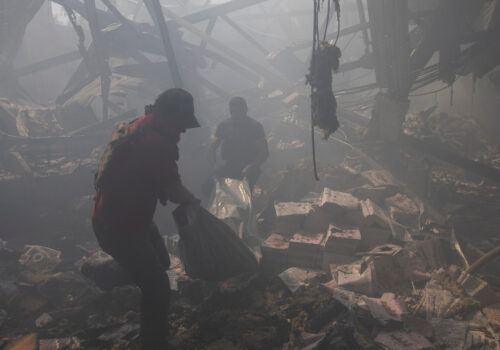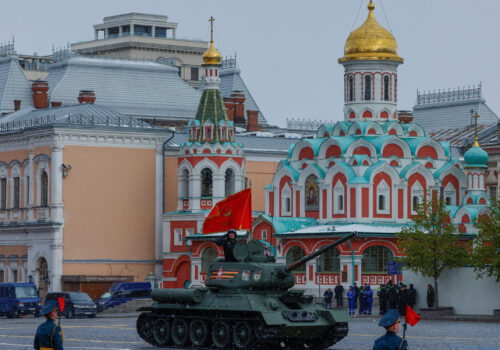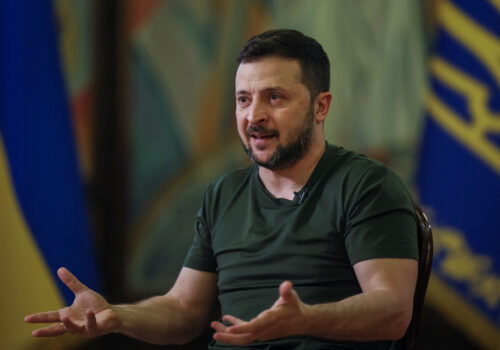Politicians, diplomats, and business leaders will gather in Berlin in early June to mobilize international support for the reconstruction of Ukraine. This latest postwar recovery conference is certainly a welcome initiative, but it is also painfully clear that today’s Ukraine has far more urgent needs.
As the summer season begins, millions of Ukrainians across the country are once again getting used to the idea of rolling electricity blackouts. These power shortages are a result of Russia’s latest air offensive, which has succeeded in destroying much of Ukraine’s power grid in the space of just a few months.
Ever since the start of the full-scale invasion in February 2022, Ukraine’s civilian energy structure has been a prime target for Russian missile and drone attacks. The situation has deteriorated sharply during the first five months of 2024, with Russia exploiting growing gaps in Ukrainian air defenses caused by delays in Western aid to conduct a series of devastating strikes on critical energy targets.
This has caused levels of damage far beyond anything witnessed during previous Russian air offensives. Ukraine’s largest private power producer, DTEK, confirmed in early May that more than ninety percent of its thermal power plants had been destroyed. Meanwhile, the news from state-owned power generator Centrenergo was even grimmer, with all coal-fired units wrecked by Russian bombardment.
Stay updated
As the world watches the Russian invasion of Ukraine unfold, UkraineAlert delivers the best Atlantic Council expert insight and analysis on Ukraine twice a week directly to your inbox.
For the time being, the situation is not critical. With the days currently getting longer and Ukraine basking in glorious spring sunshine, power consumption remains relatively low and can mostly be covered by the country’s remaining nuclear and renewable generation. Nevertheless, when electricity demand spikes during evening hours or when the weather turns cloudy, Ukraine is already facing shortfalls that cannot be entirely met with imports from neighboring EU markets.
In order to balance the power grid, Ukraine’s transmission system operator, Ukrenergo, has introduced a schedule of rolling power cuts that leave households and industrial consumers without access to electricity for hours on end. This is impacting the production capacity of the Ukrainian defense industry, which is expanding rapidly in a bid to reduce the country’s reliance on faltering Western supplies of weapons.
Ukraine’s current electricity shortages are relatively straightforward compared to the far more serious challenges posed by the rapidly approaching winter season. While the sun is now shining in Ukraine, within five months the country will enter a half-year period of freezing temperatures and long, dark nights with much of its energy generation capacity wrecked and demand for electricity likely to double. This is a recipe for potential humanitarian catastrophe that requires urgent international attention.
Eurasia Center events

Ukraine’s heroic energy engineers are currently hard at work mending torn transmission lines, rebuilding power plants, and attempting to fix damaged transformers. In many cases, these repairs need to be carried out from scratch. Power companies are appealing to EU countries to donate old kit from decommissioned stations or share spare stocks ahead of the coming winter season. Efforts are also underway to increase border capacity with EU countries by around one-third in the coming months.
If Ukrainian power producers succeed in restoring a large portion of damaged thermal capacity, the country will be relatively well equipped to cope with the seasonal surge in demand once winter arrives. Some small-scale generation capacity using natural gas may also be added to the system, helping to bring more flexibility during periods of peak consumption.
However, it is crucial to underline that this is a highly optimistic scenario. Without significantly enhanced air defenses, the danger of fresh Russian air strikes will remain. Any energy infrastructure repaired between now and October may well be destroyed once again on the eve of the first big winter chill.
A number of alternative solutions to Ukraine’s energy sector crisis have been pitched so far. These include building decentralized electricity clusters around urban areas that would be less vulnerable to Russian bombardment. Other proposals depend on the possibility of expanding interconnection capacity with EU countries and increasing production specifically for export to Ukraine. While such steps could play a vital role in enabling Ukraine to survive the coming winter season, they would likely require complex political negotiations.
The most immediate challenge facing Ukraine is defending the country’s remaining power grid and preventing Russia from destroying repaired facilities. This should be the top priority for all of Ukraine’s partners. While recovery and investment conferences offer hope for the future, Ukraine desperately needs additional air defenses to keep the lights on right now. If this does not happen, millions of Ukrainians will face the prospect of a rapidly deteriorating humanitarian situation as the winter season draws closer.
Dr. Aura Sabadus is a senior energy journalist who writes about Eastern Europe, Turkey, and Ukraine for Independent Commodity Intelligence Services (ICIS), a London-based global energy and petrochemicals news and market data provider. Her views are her own.
Further reading
The views expressed in UkraineAlert are solely those of the authors and do not necessarily reflect the views of the Atlantic Council, its staff, or its supporters.

The Eurasia Center’s mission is to enhance transatlantic cooperation in promoting stability, democratic values and prosperity in Eurasia, from Eastern Europe and Turkey in the West to the Caucasus, Russia and Central Asia in the East.
Follow us on social media
and support our work
Image: Thermal power plant employee appears on site at the building damaged by recent Russian missile strikes, amid Russia's attack on Ukraine, at an undisclosed location in the west of Ukraine May 2, 2024. REUTERS/Roman Baluk




